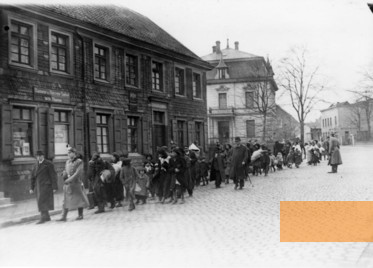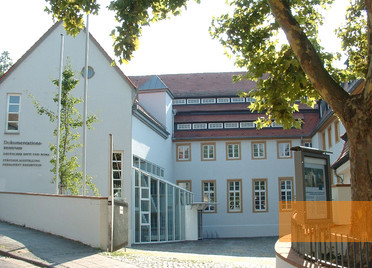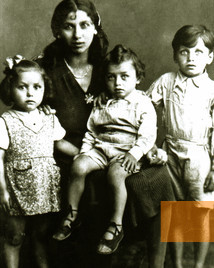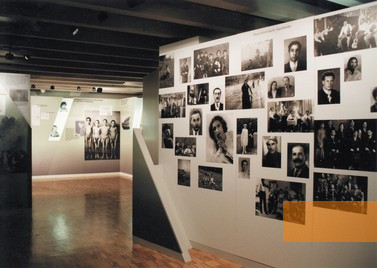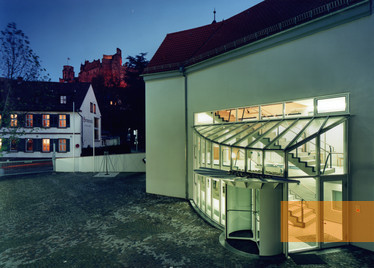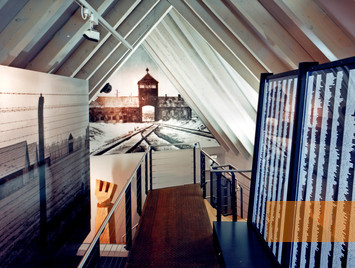Opened in 1997 in Heidelberg, the Documentation and Cultural Centre
of German Sinti and Roma informs about the 600 years long history and culture of this minority group in Germany. Of central importance within the exhibition is the National Socialist genocide of the Sinti and Roma, costing the lives of up to 500,000 people in Europe.
Sinti and Roma lived in Germany for about 600 years. Sinti immigrated to German-speaking regions in the Middle Ages, members of the minorities that immigrated to Eastern Europe are called Roma. The different groups of Sinti and Roma all belong to the Romani people – speaking various forms of the Romani language. In Germany as well as in other countries members of this minority have been faced with prejudices, have been discriminated against and have been persecuted for centuries as »Gypsies«. In the Weimar republic Sinti and Roma were persecuted and policed. The National Socialists tightened these measures against »Gypsies« after their accession to power in 1933: from 1934 on, members of this minority were subject to forced sterilization, in 1935 the police set up compulsory camps for them in many German cities. Hundreds of people were interned in such a camp in the Berlin borough of Marzahn two weeks before the Olympic Games of 1936. In the same year, the Nazis enacted a racist special law, which for »Gypsies« meant a marriage ban and exclusion from certain professions and the German army. After the German attack on Poland in 1939 the SS planned to deport the German Sinti and Roma to the Generalgouvernement in occupied Poland. In 1940 about 2,500 men, women and children were deported to concentration camps and ghettos. In December 1942 Heinrich Himmler ordered the deportation of all remaining Sinti and Roma from the Reich to Auschwitz-Birkenau. Tens of thousands of Sinti and Roma from all over Europe were deported to the extermination camp and murdered there.
Up to 500,000 men, women and children who were persecuted as »Gypsies« have become victims of the genocide under National Socialist rule. The precise number is probably impossible to determine. Members of the Yeniche people and other travellers were also subject to persecution as »Gypsies«.
The genocide against the Sinti and Roma of Europe was for a long time almost entirely absent from public discourse. It was only in 1982 that Chancellor Helmut Schmidt acknowledged the genocide as such. Prior to this many Sinti and Roma had joined forces in a civil rights movement, in 1982 they founded the Central Council of German Sinti and Roma. In the early 1990s the Central Council of German Sinti and Roma moved into a historic building in Heidelberg. Supported by the city of Heidelberg the building was converted into the Documentation and Cultural Centre
of German Sinti and Roma. After several years of construction works the building complex was opened in March 16, 1997 with a ceremony, showing the world's first permanent exhibition regarding the genocide of the Sinti and Roma. The exhibition's focus is on the more than 600 years of history and culture of the Sinti and Roma in Germany as well as information on the persecution and murder of Sinti and Roma during National Socialism.
- Name
- Dokumentations- und Kulturzentrum Deutscher Sinti und Roma Heidelberg
- Address
-
Bremeneckgasse 2
69117 Heidelberg - Phone
- +49 (0)6221 981 102
- Fax
- +49 (0)6221 981 177
- Web
- http://www.sintiundroma.de
- info@sintiundroma.de
- Open
- Tuesday: 9.30 a.m. to 7.45 p.m.
Wednesday, Thursday, Friday: 9.30 a.m. to 4.30 p.m.
Saturday and Sunday: 11.00 a.m. to 4.30 p.m. Closed on Mondays and national holidays - Possibilities
- Educational offers, events, guided tours


